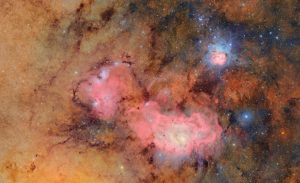UI astronomer hopes new telescope will unlock some universal mysteries
June 27th, 2025 by Ric Hanson
(Radio Iowa) – Many space scientists in Iowa are thrilled after seeing the first high-resolution images being released this week from the mountaintop Rubin Observatory in Chile, taken by the largest digital camera ever built. University of Iowa astronomy professor David Nataf says the large, detailed photos may deepen our understanding of the cosmos, helping us to comprehend things like how fast the universe is expanding. “Maybe our understanding of the universe, and by extension our understanding of physics, has small errors in it or potentially large errors in it,” Nataf says. “What the Rubin Observatory can allow us to do, it can allow us to probe several of these questions to much greater accuracy and precision.”
The observatory’s telescope is enormous, with a mirror more than 26 feet in diameter. Scientists are using it to launch a ten-year project to image 20 billion galaxies, 17 billion stars, and many millions of asteroids. Nataf says the observatory is already yielding impressive results. “It’s located at a very good site in Chile, which is probably one of the best sites in the world. The skies are very clear, rain is very rare,” Nataf says. “The telescope can move from one location to the next really, really quickly. And finally, it has a very, very big camera. I think it’s 3,000 megapixels.”

The Trifid nebula (top right) and the Lagoon nebula (Image from NSF-DOE Vera C. Rubin Observatory)
Nataf compares the observatory’s camera to the one onboard the celebrated Webb Space Telescope, which was placed in orbit in 2021.”Webb’s primary camera is about 8 megapixels,” he says, “so you would have to spend a very long time making a mosaic of all the individual images to match the wide field of view of the 3,000-megapixel camera from the Rubin Observatory.” It’s expected the Rubin facility will capture more data about the universe than has been gathered by all optical telescopes throughout history combined.
The observatory venture in Chile is being funded by the National Science Foundation and the U-S Department of Energy’s Office of Science.





